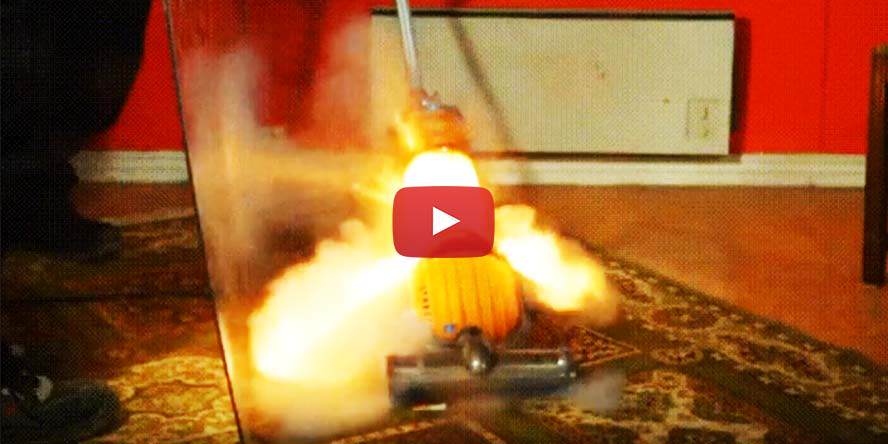The video depicts an explosion which can occur as an ignition source enters a vacuum cleaner. Although the example is based on an ordinary household appliance, it is an excellent example of a phenomenon that can occur in industrial central vacuuming and dust extraction systems, cyclones and even relatively small industrial vacuum cleaners.
The video depicts an explosion which can occur as an ignition source enters a vacuum cleaner. Although the example is based on an ordinary household appliance, it is an excellent example of a phenomenon that can occur in industrial central vacuuming and dust extraction systems, cyclones and even relatively small industrial vacuum cleaners.
A cigarette butt is drawn into a working vacuum cleaner. With a high degree of probability, we can assume that the air flow generated by the vacuum cleaner fan will cause the cigarette butt to glow. There is an effect similar to the one that takes place e.g. during a bonfire – a blow of air intensifies the glowing of wood. As soon as the ignition source enters the dirty air chamber, a violent explosion destroys the vacuum cleaner.
In the industry, similar situations can be encountered in central vacuuming systems, dust extraction systems, cyclones or even much smaller industrial vacuum cleaners. Recently, we have described several events of this type, for example:
- explosion in a dust extraction system in a button factory near Poznań, Poland
- 134 million compensation for explosion in a wood dust extraction filter
- explosion of magnesium and aluminium dust in the filter
Groups of devices in which DUST explosions occur most frequently
According to the statistics, air filters and cyclones belong to the group of equipment at the highest risk of explosion. For example, according to BIA statistics – Reports 11/97, dust extraction systems are ranked second (17% of all explosions), after silos and tanks (20% of all explosions) among the systems in which explosions occur most frequently. Taking into account only events involving metal dusts, as much as 44% of all industrial explosions take place in dust extraction installations.
- 20% - SILOS AND TANKS
- 17% - DUST EXTRACTION SYSTEMS
- 13% - MILLING SYSTEMS
- 10% - TRANSPORT SYSTEMS
- 8% - DRYING SYSTEMS
- 5% - AFTERBURNING SYSTEMS
- 5% - POLISHING AND GRINDING INSTALLATIONS
- 3% - SCREENING SYSTEMS
- 16% - OTHER
Source of statistics: BIA – Reports 11/97
How to correctly protect the air filter against the effects of explosion
In accordance with the requirements of the ATEX Directive, priority should be given to preventive measures to reduce the risk of explosion. These include the introduction of appropriate work procedures, increasing the awareness of employees through appropriate training, elimination of ignition sources and elimination of explosive atmospheres. Despite these solutions, it is not possible to eliminate the risk of explosion completely. For this reason, the ATEX Directive indicates the need to protect installations against the effects of an explosion.






